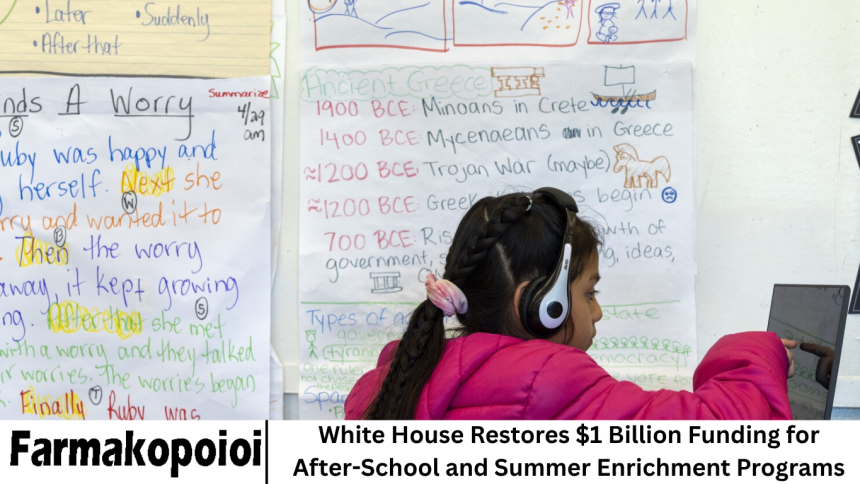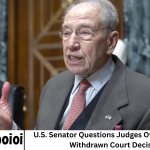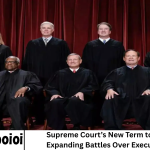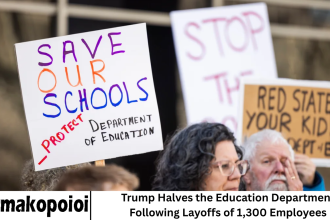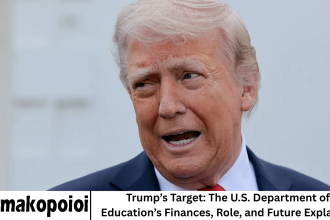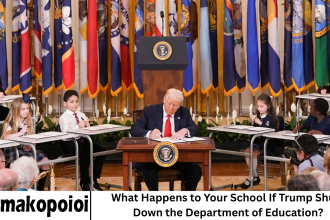In a landmark decision that has energized educators, parents, and policymakers across the United States, the White House has announced the restoration of $1 billion in funding for after-school and summer enrichment programs.
- The Announcement: A Turnaround for After-School and Summer Learning
- Why the Funding Matters
- Addressing Learning Loss
- Supporting Working Families
- Encouraging Holistic Development
- Reducing Youth Crime and Risk Behaviors
- Strengthening Community Partnerships
- Funding Breakdown and Allocation
- Voices from the Field: Educators and Parents React
- The Broader Context: Education Policy and Political Considerations
- Long-Term Implications
- Sustaining Academic Gains
- Enhancing Workforce Readiness
- Promoting Equity and Inclusion
- Strengthening Public-Private Collaboration
- Encouraging Innovation in Education
- The Evidence: What Research Says About After-School and Summer Programs
- Challenges Ahead
- Community Innovation Spotlight
- Frequently Asked Question
- Conclusion
This move marks a major step in addressing the educational and developmental needs of millions of American students—particularly those still recovering from the learning disruptions caused by the COVID-19 pandemic.
The restored funding underscores the federal government’s renewed commitment to youth development and community education. It represents more than just financial support—it’s a strategic investment in the nation’s future workforce, community well-being, and family stability.
More Read: Trump Halves the Education Department Following Layoffs of 1,300 Employees
The Announcement: A Turnaround for After-School and Summer Learning
Earlier this week, administration officials confirmed that $1 billion in federal funding would be released to states and local education agencies to support after-school and summer programs for K–12 students.
The announcement followed a temporary freeze on certain education funds as the administration reviewed federal spending priorities. After strong public response and lobbying from state leaders and education advocates.
The White House decided to unfreeze the funds, citing overwhelming evidence that enrichment programs contribute to better academic outcomes and social-emotional development.
Education Secretary Miguel Cardona praised the decision, noting that “after-school and summer learning opportunities are where students reconnect, re-engage, and rediscover the joy of learning.”
Why the Funding Matters
Addressing Learning Loss
The pandemic left deep scars on the education system, with learning gaps widening between low-income students and their more affluent peers. After-school and summer programs provide targeted interventions—such as tutoring, literacy activities, and STEM enrichment—that help close those gaps.
Supporting Working Families
For millions of parents, especially those in dual-income or single-parent households, these programs are lifelines. They ensure children are in safe, supervised environments after school hours, reducing childcare burdens and enabling parents to maintain employment.
Encouraging Holistic Development
Beyond academics, after-school and summer programs offer opportunities for sports, arts, music, and social engagement. These experiences cultivate creativity, teamwork, and leadership—skills that traditional classroom settings may not always foster.
Reducing Youth Crime and Risk Behaviors
Research consistently shows that students engaged in structured after-school activities are less likely to engage in risky behaviors, such as substance abuse or delinquency. The programs provide constructive outlets for energy and creativity, reducing idle time that often leads to trouble.
Strengthening Community Partnerships
The funding will empower schools to collaborate with nonprofits, community centers, and local businesses. Such partnerships can expand program reach and diversity—offering everything from robotics camps to theater workshops.
Funding Breakdown and Allocation
The $1 billion restoration will be distributed through the 21st Century Community Learning Centers (21st CCLC) program, the largest federal initiative dedicated to out-of-school-time learning.
According to preliminary reports:
- 80% of funds will go directly to state education agencies, which will then allocate grants to local districts.
- 10% will be reserved for evidence-based pilot programs targeting underserved rural and urban communities.
- 10% will support professional development for program staff and research initiatives to evaluate program effectiveness.
The funding can be used for a variety of purposes, including:
- Academic tutoring and homework help
- Enrichment activities in science, arts, and physical education
- Mental health support and counseling services
- Nutrition programs for food-insecure students
- Transportation for students in remote areas
States will be required to submit plans detailing how they intend to use the funds effectively and equitably.
Voices from the Field: Educators and Parents React
The reaction to the White House announcement has been overwhelmingly positive.
Teachers and School Administrators:
Many educators view the funding as a lifeline for programs that were facing severe cutbacks. “This isn’t just about keeping the lights on after 3 p.m.,” said one middle school principal in Ohio. “It’s about ensuring kids have a place to belong, learn, and grow.”
Parents:
Parents have also expressed relief. “My two kids attend an after-school robotics club that was at risk of being canceled,” said a mother in Texas. “Now, they’ll get to continue something they truly love.”
Nonprofit Leaders:
Organizations like the Afterschool Alliance and Boys & Girls Clubs of America praised the decision, emphasizing that federal support helps sustain the infrastructure needed to serve millions of children.
The Broader Context: Education Policy and Political Considerations
The decision to unfreeze the $1 billion also reflects larger political and social dynamics. The White House’s action comes amid debates about federal education priorities—balancing funding for traditional K–12 instruction with investments in extended learning, childcare, and workforce preparation.
Some critics argue that after-school and summer programs should be primarily funded at the state or local level. However, supporters counter that federal investment ensures equity, ensuring that children in low-income and rural areas have the same opportunities as those in affluent districts.
Additionally, the move may help repair strained relationships between the federal government and educators following previous funding uncertainties. Restoring the funds reinforces the administration’s message that education remains a cornerstone of national recovery and competitiveness.
Long-Term Implications
Sustaining Academic Gains
Consistent participation in after-school and summer learning has been linked to higher test scores, better attendance, and improved graduation rates. Restored funding will help schools maintain these gains over time.
Enhancing Workforce Readiness
Programs focused on STEM, vocational skills, and entrepreneurship prepare students for the 21st-century workforce. The funding will allow more schools to integrate hands-on career experiences into extracurricular programs.
Promoting Equity and Inclusion
This initiative targets underserved communities, ensuring that students of color, students with disabilities, and those in low-income families are not left behind. Equal access to quality enrichment opportunities is vital to closing persistent achievement gaps.
Strengthening Public-Private Collaboration
The influx of federal funds will likely attract matching contributions from private and philanthropic partners, multiplying the impact of the investment.
Encouraging Innovation in Education
From virtual learning hubs to outdoor environmental programs, schools are expected to experiment with creative models to engage students. The White House’s funding restoration gives them the flexibility to innovate.
The Evidence: What Research Says About After-School and Summer Programs
Extensive research supports the effectiveness of out-of-school-time learning. A 2023 RAND Corporation study found that students attending summer learning programs gained the equivalent of one to two months of additional math and reading instruction compared to peers who did not attend.
The Afterschool Alliance reports that for every dollar invested in after-school programs, communities see a return of up to $3, primarily through reduced crime, improved academic performance, and higher family stability.
The Wallace Foundation highlighted that high-quality after-school programs lead to measurable gains in social-emotional skills, such as resilience and teamwork. These findings strengthen the argument that the $1 billion restoration is not merely a budgetary move but a data-driven investment in human capital.
Challenges Ahead
While the announcement has been celebrated, implementing the programs effectively will require careful planning.
Staffing Shortages
Many districts continue to face shortages of qualified after-school staff. Training and retaining professionals will be crucial for program quality.
Equitable Access
Ensuring that funds reach rural and low-income areas—where transportation and infrastructure barriers exist—remains a key challenge.
Accountability and Oversight
Federal and state agencies must track outcomes to ensure funds are used efficiently. Transparency will be essential to maintain public trust.
Sustaining Funding Beyond This Cycle
The $1 billion restoration is a significant step, but experts emphasize the need for multi-year commitments to ensure continuity.
Community Innovation Spotlight
Several schools and organizations are already gearing up to use the funding creatively:
- Los Angeles Unified School District plans to expand its “Beyond the Bell” program, offering robotics, music, and financial literacy workshops.
- In North Carolina, community centers are partnering with local farms to provide hands-on agricultural learning combined with nutrition education.
- Chicago Public Schools will invest in trauma-informed summer programs that integrate counseling with academic support.
These examples illustrate the diversity of enrichment opportunities that federal support can unlock.
Frequently Asked Question
What is the purpose of the $1 billion funding restoration?
The funding aims to support after-school and summer programs that provide academic assistance, enrichment activities, and safe environments for students outside regular school hours.
How will the money be distributed?
Funds will primarily flow through the 21st Century Community Learning Centers (21st CCLC) initiative, with allocations determined by state education agencies.
Who benefits from these programs?
Students from K–12, particularly those from low-income, rural, and underserved communities, will benefit from access to tutoring, enrichment, and mentorship opportunities.
What types of programs will the funding support?
Eligible programs include tutoring, STEM clubs, arts and music workshops, sports, career readiness activities, and mental health counseling.
Why were the funds previously frozen?
The freeze occurred during a broader review of federal education spending. The White House later decided to unfreeze the funds after evaluating their impact on student outcomes.
How will program effectiveness be measured?
Schools and states must submit reports showing student participation, academic improvement, and community engagement to ensure accountability.
Is this funding permanent?
Currently, the funding represents a restored annual allocation. However, education advocates are urging Congress to make similar investments permanent in future budgets.
Conclusion
The White House’s decision to restore $1 billion in funding for after-school and summer enrichment programs represents a powerful reaffirmation of America’s commitment to its youth. Beyond academics, these programs offer stability, safety, and inspiration—helping students rediscover confidence, creativity, and curiosity.
As schools and communities begin implementing these initiatives, the real test will be how effectively they can transform this funding into lasting change. With collaboration, accountability, and innovation, this investment has the potential to shape not only the next generation of learners but the very future of the nation.


